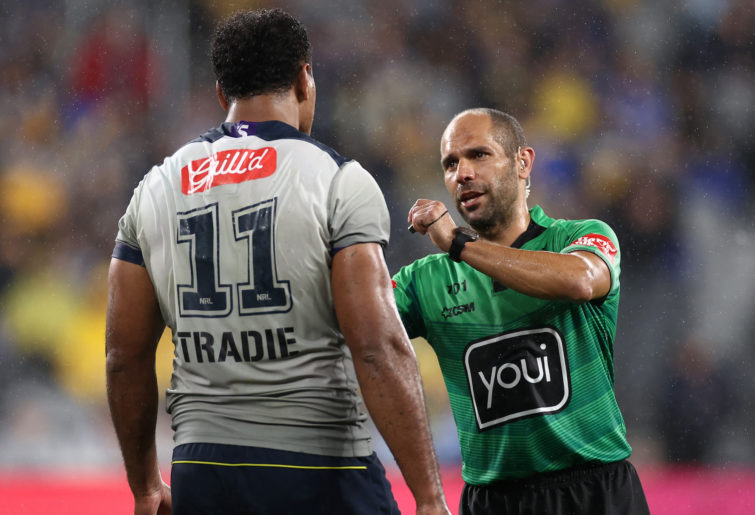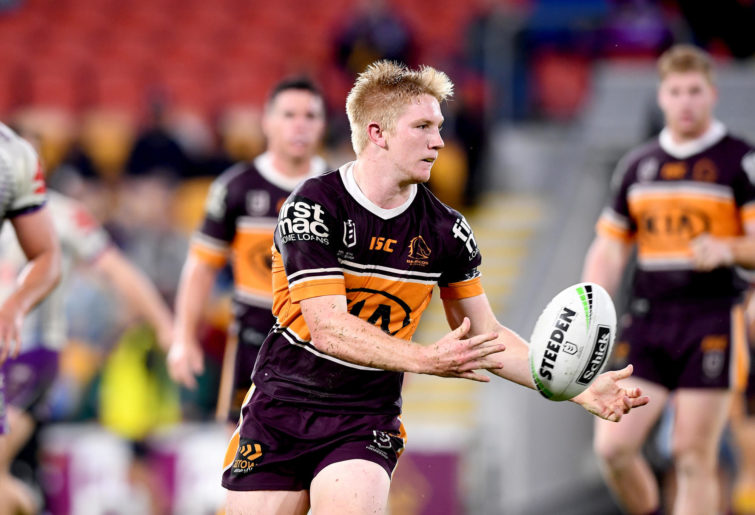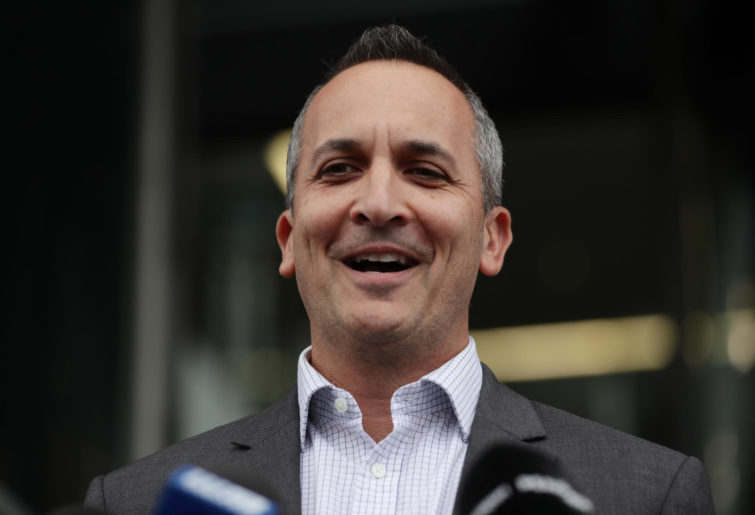This is obviously a topic that will interest many who follow the NRL, given the apparently high number of injuries this season. Teams have had to finish games without any fit players on the bench, which is seen by many as wrong, hence the calls for an 18th player.
This originally stemmed from players suffering head injuries, sometimes from illegal play, which meant they had to undergo a head injury assessment (HIA).
Trent Robinson offered some thoughts following a concussion to Jake Friend and this has caused more discussion about this issue, with many suggesting the possibility of an 18th player being added, so players unable to return to a game after failing an HIA, or teams that have no remaining bench players, can have more replacements.
I’m not convinced the game needs more players on game day, but first, some history about replacements in the game of rugby league (with thanks to NRL.com).
•From 1908 to 1925 a local rule operated in NSW whereby a replacement player was allowed for an injured player
•Between 1925 and 1963 there were no replacements allowed
•In 1963, the replacement rule in Sydney changed so teams were allowed to replace up to two injured players, up to and including halftime
•In 1970, two replacements for injured players were allowed at any time during a game, though each had to have played at least half a game in the lower grades
•In 1987 a ‘head-bin’ was introduced to allow players suffering minor head injuries to return to the field of play after 10 minutes without affecting the team’s quota of replacements
•In 1988 two fresh reserves were allowed, but again, with a limit of two changes per team per match
•In 1991 concern over the potential spread of blood-borne diseases and the perceived ‘abuse’ of the head-bin rule saw the introduction of a four-player bench, then in April, a maximum of four players available for a total of six interchanges in a match. Players sent to the ‘blood-bin’ did not count among these six interchanges
•In 1996 the game moved to an unlimited interchange rule with fresh reserves
•In 2001 interchanges were limited to 12, with ‘blood-bins’ not included
•In 2008 the game adopted the current ten interchange rule in consultation with club officials, coaches and players. The 10 interchanges would include any blood-bin replacements, injury replacements and tactical replacements.
In short, the current iteration of the replacement/interchange rules allows for injury replacements, regardless of whether they are a head injury or otherwise.
That said, there’s room to include a specific replacement player, who only comes into the match as a result of a game ending injury.
In order to accommodate that, it’s important to look at what the NRL is trying to do about the game as a whole and also what it should be doing.
Peter V’landys and Andrew Abdo have stressed the need to speed the game up and make players more tired, to open up the game and create more try-scoring opportunities for teams.
They also need to take a serious stance on illegal play that is seeing players sidelined, often for long periods. An obvious recent example of this is Ryan Matterson, who is out indefinitely thanks to an elbow to the head by Felise Kaufusi.

(Photo by Cameron Spencer/Getty Images)
My suggestion is multi-faceted and needs all elements to be introduced in order to work.
Rather than have an 18th player available to come into games when a player suffers a head injury, teams would still have only the 17 players, but would designate one of these as the ‘injury replacement player’ (IRP).
Many would argue we should have an additional player available, on top of the existing 17, given the recent spate of injuries that have left teams down to a bare 13, but to that I say, where do you start and stop?
When does 17 become 18, become, 19 – or perhaps we’d like to go down the union path and have eight possible substitutes?
I’m not a stats guru like Tim Gore, but I’m guessing for every game where sides have to use up all of their bench to get through a game, there are as many, if not more games, where one of the four bench players hardly gets on to the field.
In the Broncos-Bulldogs game, for example, Joe Stimson played 13 minutes and Tom Dearden played just seven!

(Photo by Bradley Kanaris/Getty Images)
Anyway, back to the IRP.
The IRP could come into the game only when there is an injury that requires an HIA, or if a player suffers an injury that means they are not able to return to that match.
IRPs would not count as an interchange. This is to encourage players to come off the field and have an HIA, as well as encouraging players not to keep playing with severe injuries that could have longer-term effects on their health.
Players replaced by the IRP cannot come back to the game, apart from those who pass the HIA and return after the mandatory ten minutes on the sideline.
The effect of the IRP is that clubs would have three interchange players, but still have ten interchanges plus the ability to replace players, regardless what type of injury they incur.
The reduction in the number of players available for interchange should also mean more players getting tired, which in turn should mean the game opens up more, which is what the NRL is after.
A positive side effect is the 18th player would probably have to be a utility player, capable of slotting into a role in the backs or forwards. Of course, clubs could take a punt and fill that position with either a back or forward, but run the obvious risk of getting the call wrong and not having a like-for-like replacement.
Rule changes around illegal play need to be implemented.
If a player has to be replaced as a result of illegal play, the player deemed to have committed the illegality is automatically sin binned for ten minutes.
If the illegality involves deliberate contact with the head or neck, the player committing the illegality is sent off. The player who was contacted in the head also has to undergo an HIA, but can be replaced by the IRP.
If the injured player passes their HIA, they return to the field and the player that was sent off can be replaced, 20 minutes after they left the field. If the injured player fails their HIA, then the player sent off cannot be replaced.
The purpose of these rule changes is to try prevent the sort of crazy situations we saw in Round 2, where Latrell Mitchell was binned when he barely touched Daly Cherry-Evans, yet Kaufusi stayed on the field, while Ryan Matterson could not return to the game.

(Photo by Cameron Spencer/Getty Images)
An additional purpose is to try and reduce the number of players suffering injury through illegal play. This will only happen if the NRL also introduces much stronger deterrents for foul play.
Any player who is sin binned for foul play, be it a professional foul, or other illegal act, will automatically be suspended for the next match and should face further sanction if they are a repeat offender or if the judiciary thinks further punishment may be warranted.
Players sent off for offences involving attacking the head or neck will face a minimum of four weeks on the sidelines and repeat offenders will face at least three-month suspensions. This seems harsh, but this is an aspect of the game that needs to be stamped out.
V’landys and Abdo have to understand that it’s far better to have a few games of 13-on-11-or-12 for a short while, with ugly headlines about the length of suspensions than it is to have players crippled for life, thanks to being attacked around the head or neck.

(Photo by Mark Metcalfe/Getty Images)
They then need to make sure the rules are written in such a way that there is no room for dispute. That empowers the refs to do their job and send players off if or when they injure others.
These changes will not prevent injuries, especially those which occur through accidental head clashes. At the end of the day, rugby league is still a game and all games have an element of luck involved.
In summary, having an injury replacement is very doable, as long as a number of other steps are followed. These suggestions allow the spirit of what the NRL is trying to achieve (i.e., a more open contest), while doing far more to protect players’ health and safety.
I’d suggest if these moves were introduced for the 2022 season, the number of players sidelined through injury based on illegal play would decrease by some margin, as would the number of players out through suspension.
At the end of the day, we all want to see the very best players on the field as often as possible. These changes would go a long way to maximising that.

































































































